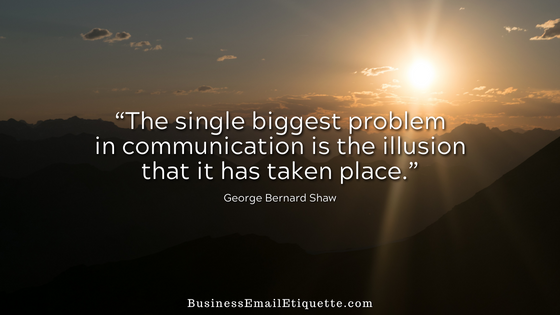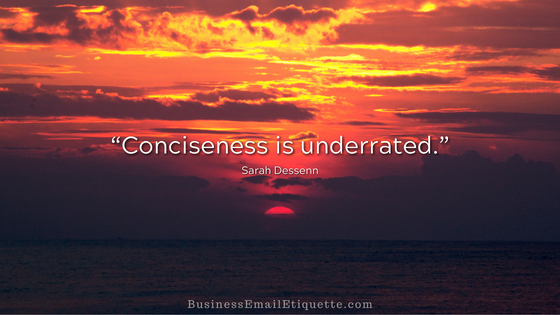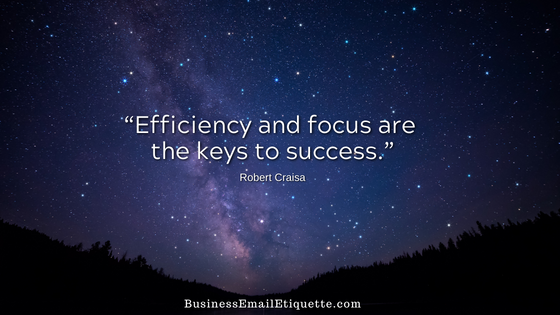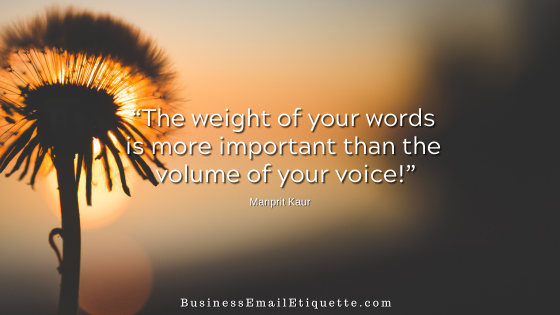No Opening Greeting or Courtesy Closing?

When I wrote about Business Email Sign-offs, visitors then asked about business email greetings. A couple of folks stated they receive many emails without greetings.
Without a friendly greeting (Hello, Hi, G’Day, Hey) at the beginning of your business email, you miss the opportunity to set the tone for the rest of your communication. Worse yet, you risk your email being perceived as demanding or terse.
When you call someone on the phone, you don’t just start talking without a greeting. In offline letters, you do the same. So why do so many feel this little courtesy doesn’t apply to email?
It can’t be because it takes too much time or effort. Typing a simple “Hello” and a name, along with a nice courtesy closing, takes a little time and effort. So why do so many skip this step?
I believe it is due to assumed informality. In reality, business email communications differ from text messaging or personal emails. However, many underestimate these essential relationship and networking communication skills. What impression will short, terse, and sans basic courtesies emails provide?
Aren’t all emails Informal?
Over the years, I’ve found that many people think writing skills and best practices don’t apply to business emails. They perceive email as an informal communication tool that negates the need for courtesy or being perceived as an educated professional in business.
Nothing is informal about building relationships, promoting your brand, or growing your network. The last thing you want to do is skip the steps necessary to be perceived as trustworthy, courteous, educated, and someone who knows how to communicate with the written word. By doing so, you risk your competitors easily outperforming you.
Here’s an example: No Greeting vs. Greeting.
Without a greeting:
I want you to follow-up on my last memo and make sure that everyone noted received their copy. John
With a greeting (and a dash of courtesy):
Hello, Jane:
Can you please follow-up on my last memo and make sure that everyone noted received their copy?Thank you,
John
Of course, the added “Thank you” is always a nice touch when asking someone to do something on your behalf.
Over time, not using a greeting can cause the other person to cringe when they see your name in their inbox. They’ll wonder what bossy request you may have next.
And to think… This perception can easily be avoided by simply taking the time to add a little: “Hello,”
Do Not Underestimate Greetings (and details)
“Email is informal — that stuff isn’t necessary!” You may get away with that thought in your personal emails, but not in your business ones.
Coincidentally, the same group also thinks it is unnecessary to include necessary details. They do not believe that having their name and a closing statement is essential. For example, “My name is in the From field. That’s good enough.”
Yes, common courtesy applies when communicating in writing; without a greeting and closing, your emails risk being perceived as harsh and unprofessional. Opportunity lost?
You bet. Don’t be surprised if potential customers choose to do business with competitors who take the time to add these little extras. Competitors who make communicating with them an easy, enjoyable, and efficient experience.
Greetings = Tone = Perception
Here is another example to illustrate the difference that the little details can make.
First, the emailer who feels that greetings, clarity, and courtesy are not necessary:
my site isn’t working you need to fix this now – get back to me ASAP
What exactly isn’t working? No “Hello,” no thank you, no proper sentence structure or courtesy—just a statement of what the sender wants to get across.
Now, add a greeting with a dash of detail, a little courtesy, and a closing…
Hello, Judith:
Hope you are having a nice day. I was wondering if you could check out an issue with my website? The portfolio page is not laying out correctly and the internal links are not working. The page’s URL is… (request continues).Thanks for your help!
Carry Client
Big difference, right? The second example was courteous and transparent in its request, providing the details I needed. The sign-off makes one feel as though their efforts are appreciated.
I can help her by providing the details needed to address her issue. This approach also lets me resolve her request and note the situation in my reply.
With the first inquiry, besides the demanding tone, I would have to reply and ask questions to determine the “problem” before investigating further. In addition, the extra unnecessary emails will affect the efficiency of both sides.
Can you see how the same request can be perceived differently simply by adding a little greeting, common courtesy, and a closing? Which type of communicator would you prefer to partner with?







